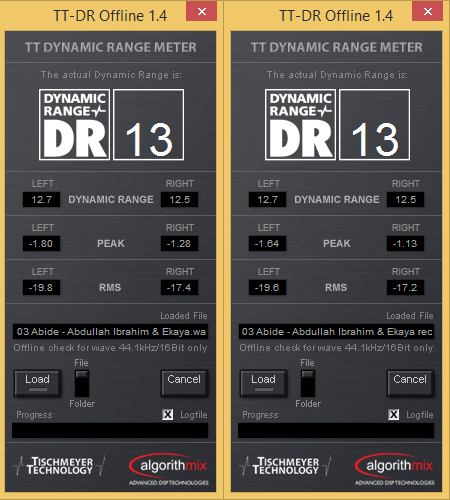Following this post
http://news.cnet.com/8301-13645_3-5...most-accessible-high-resolution-music-format/
I was wondering for a long time why a mastering engineer would say that LP is better than digital but then i saw this:
http://dr.loudness-war.info/index.php?search_artist&search_album=Hail+to+the+King
Of course after you see that the LP version is much better then the HDTracks one you start to wonder, maybe he has a point?
So I posted a question in a different more "mastering" related forum and I got this answer:
'You can't go by the DR database to compare vinyl vs any digital format. The vinyl has already gone through a digital to analog converter so the waveforms will look different and in turn give different (more dynamic) results. Most vinyl and digital use the same master now a days.
If you were to record that HDtracks file after going through a DAC and ADC you would get very close to the same DR rating. Try it yourself you will see what I mean. Those clipped/limited peaks get restored through a DAC.'
Is this true?
If not, why do we see new recordings which the LP version is better, what's going on?
I'm confused
http://news.cnet.com/8301-13645_3-5...most-accessible-high-resolution-music-format/
I was wondering for a long time why a mastering engineer would say that LP is better than digital but then i saw this:
http://dr.loudness-war.info/index.php?search_artist&search_album=Hail+to+the+King
Of course after you see that the LP version is much better then the HDTracks one you start to wonder, maybe he has a point?
So I posted a question in a different more "mastering" related forum and I got this answer:
'You can't go by the DR database to compare vinyl vs any digital format. The vinyl has already gone through a digital to analog converter so the waveforms will look different and in turn give different (more dynamic) results. Most vinyl and digital use the same master now a days.
If you were to record that HDtracks file after going through a DAC and ADC you would get very close to the same DR rating. Try it yourself you will see what I mean. Those clipped/limited peaks get restored through a DAC.'
Is this true?
If not, why do we see new recordings which the LP version is better, what's going on?
I'm confused

















